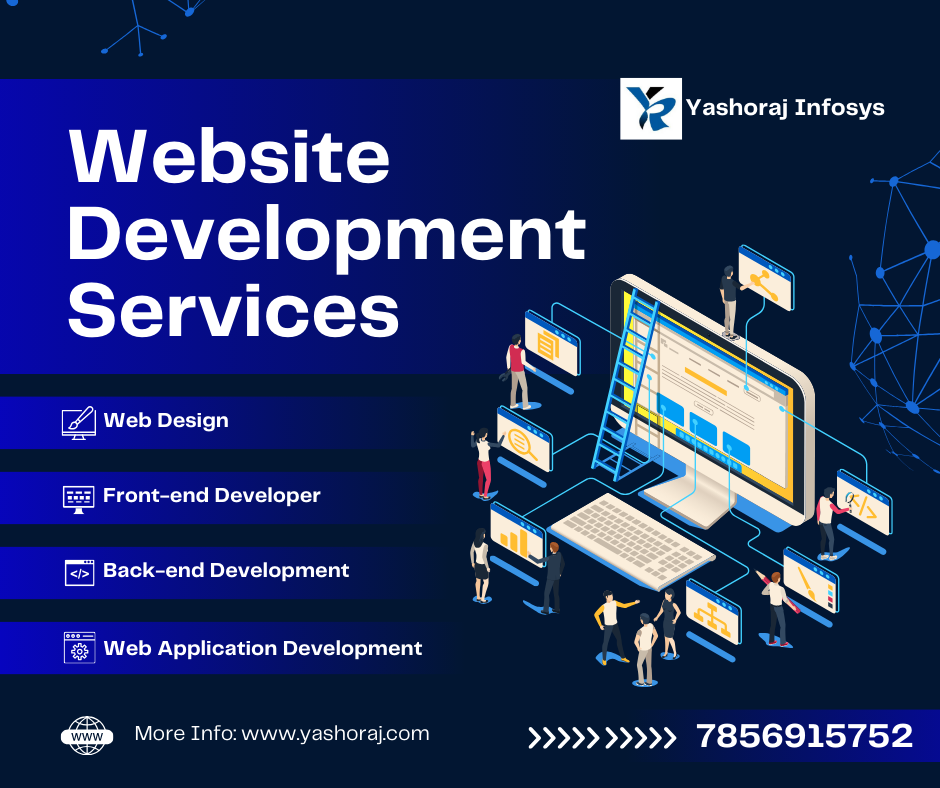
In today’s digital age, having a visually appealing website is just the beginning. To truly make an impact and attract visitors, your website needs to be optimized for search engines. SEO-friendly web design is the foundation of a successful online presence, helping you reach a wider audience and convert visitors into customers. In this blog, we’ll explore how integrating SEO best practices into your web design can boost your online presence.
Understanding SEO-Friendly Web Design
SEO-friendly web design involves creating websites that are not only attractive but also optimized to rank well on search engine results pages (SERPs). It combines the principles of search engine optimization (SEO) with design elements to enhance visibility, usability, and performance. Here’s how you can achieve an SEO-friendly web design:
1. Site Structure and Navigation
A well-organized site structure and intuitive navigation are crucial for both users and search engines. Here’s how to optimize your site structure:
- Hierarchical Organization: Arrange your content in a clear, logical hierarchy. Use categories and subcategories to make it easy for users and search engines to find information.
- Breadcrumbs: Implement breadcrumb navigation to help users understand their location on your site and improve internal linking.
- XML Sitemaps: Create and submit an XML sitemap to search engines to ensure all your pages are indexed.
2. Mobile Responsiveness
With mobile devices accounting for more than half of all web traffic, mobile responsiveness is essential. A mobile-friendly website adjusts seamlessly to different screen sizes, providing a consistent user experience across devices. Google prioritizes mobile-friendly sites in its mobile-first indexing, making it a critical factor for SEO.
3. Page Load Speed
Page load speed is a significant ranking factor for search engines and a key element of user experience. Slow-loading websites can lead to high bounce rates and poor user engagement. Here are some tips to improve load speed:
- Optimize Images: Compress images without sacrificing quality to reduce load times.
- Minimize HTTP Requests: Limit the number of elements on a page, such as scripts and images, to decrease HTTP requests.
- Leverage Browser Caching: Enable caching to store resource files on users’ devices, reducing load times for repeat visitors.
- Use a Content Delivery Network (CDN): Distribute your content across multiple servers worldwide to ensure faster load times.
4. Clean and Efficient Code
Clean, efficient code ensures that search engines can easily crawl and index your website. Avoid excessive use of plugins and scripts that can slow down your site. Use semantic HTML5 tags to structure your content, making it more accessible to search engines and assistive technologies.
5. Optimized Content
Content is the cornerstone of SEO. To create SEO-friendly content, focus on the following:
- Keyword Research: Conduct thorough keyword research to identify terms your target audience is searching for. Use tools like Google Keyword Planner, Ahrefs, or SEMrush.
- Keyword Placement: Naturally incorporate keywords into your content, including titles, headers, meta descriptions, and body text. Avoid keyword stuffing, as it can lead to penalties.
- High-Quality Content: Create informative, engaging, and valuable content that addresses the needs of your audience. Use a mix of text, images, and multimedia to enhance the user experience.
6. URL Structure
An SEO-friendly URL structure is clear, concise, and descriptive. Use hyphens to separate words and avoid using special characters or numbers. Here’s an example:
- Good URL: www.yashorajinfosys.com/web-design-trends-2024
- Bad URL: www.yashorajinfosys.com/index.php?id=123
7. Internal Linking
Internal linking helps distribute link equity across your site and improves crawlability. Use descriptive anchor text and link to relevant pages within your website to guide users and search engines through your content.
8. Meta Tags
Meta tags provide search engines with information about your website. Optimize the following meta tags:
- Title Tag: Create unique, descriptive titles for each page, incorporating primary keywords.
- Meta Description: Write compelling meta descriptions that summarize the content and include relevant keywords.
- Header Tags (H1, H2, H3): Use header tags to structure your content and highlight important sections. Include keywords where appropriate.
9. Alt Text for Images
Alt text describes images to search engines and improves accessibility for visually impaired users. Use descriptive, keyword-rich alt text for all images on your site.
10. Secure Website (HTTPS)
Security is a priority for search engines and users alike. Ensure your website uses HTTPS to protect user data and enhance trust. Google considers HTTPS as a ranking signal, so securing your site can improve your SEO.
Implementing SEO-Friendly Web Design
To implement these SEO-friendly web design practices, follow these steps:
- Conduct an SEO Audit:
- Perform a comprehensive SEO audit of your current website to identify strengths and weaknesses.
- Use tools like Google Search Console, Screaming Frog, and Moz to gather insights.
- Plan Your Redesign:
- Outline a detailed plan for redesigning your website with SEO in mind.
- Set clear goals and benchmarks for performance, user experience, and SEO.
- Collaborate with Experts:
- Work with experienced web designers, developers, and SEO specialists to ensure a cohesive approach.
- Regularly communicate and review progress to stay aligned with your goals.
- Test and Optimize:
- Continuously test your website’s performance, usability, and SEO.
- Use A/B testing to compare different design elements and optimize based on data-driven insights.
- Monitor and Update:
- Regularly monitor your website’s performance using analytics tools.
- Stay updated with the latest SEO trends and algorithm changes to keep your site optimized.
OUR SOFTWARES
1. Advance Support Ticket System
2. Advocate Management System
3. Courier and Logistics Management System
4. CRM software pro version
5. Ecommerce portal (multiple vendor) + admin panel
6. Gym Management and Fitness Management
7. Hospital Management System
8. HR management system
9. Matrimonial web portal + admin panel
10. News portal with admin panel
11. Tour and Travel portal with admin panel
12. School management system pro version
13. Real Estate system
14. Project Management software (ultimate version)
15. POS system for restaurants
16. Point of sales system (POS)
17. Pharmacy Management System
18. Online job portal + admin panel
19. Online exam web portal + admin panel
20. Online classes and tutorial web portal + admin panel
IT services in Patna, Yashoraj Infosys, Digital transformation, best IT company in patna bihar, top 10 web design company in patna bihar, best web design company in patna bihar, top software company in patna bihar, website development company in patna bihar, Digital company in patna bihar, mobile application development company in patna bihar #PatnaIT #ITservicesinPatna, #YashorajInfosys, #Digitaltransformation, #bestITcompanyinpatnabihar, #top10webdesigncompanyinpatnabihar, #bestwebdesigncompanyinpatnabihar, #topsoftwarecompanyinpatnabihar, #websitedevelopmentcompanyinpatnabihar, #Digitalcompanyinpatnabihar, #mobileapplicationdevelopmentcompanyinpatnabihar Best website design company











